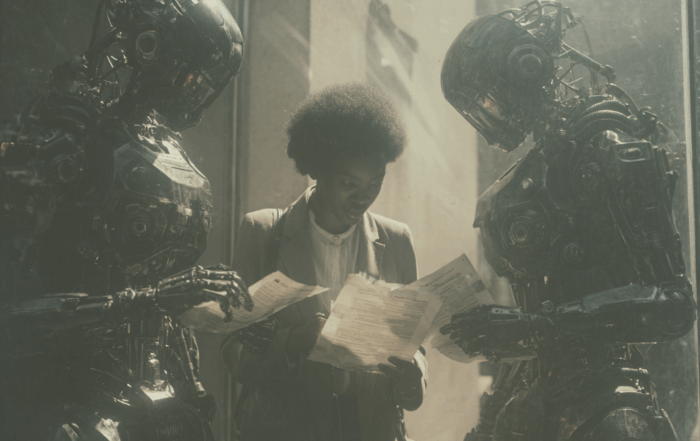You’ve been here before. A project stalls because a critical question doesn’t have an answer. Someone remembers it came up last year. The answer exists somewhere. But nobody remembers exactly where. Or who figured it out.
The hunt begins.
You search the Document Management System (DMS) and find a dozen folders with similar names. Inside: half-baked versions, duplicates, “Final_v3_REAL” files, and PDFs with titles that mean nothing outside their original context. You try the wiki. It’s outdated. You send messages in the company chat “Does anyone remember who solved this?” and wait.
Days pass. The project bleeds time. Deadlines slip. All because the organisation knows the answer exists, but can’t find it or connect it to the person who holds the context.
Why This Happens in Every Enterprise
Enterprises are information machines, but that information is scattered across systems, departments, and formats.
The root causes:
-
Buried documentation. DMS folders become black holes. Documents get stored but never resurface when needed.
-
Disconnected knowledge. Even if the document is found, it often lacks the author’s name or any direct tie to the person who created the insight.
-
Uploader ≠ Author. The person who put the file in the system is rarely the one who actually produced the content. They can’t answer follow-up questions.
-
No dynamic association between people and content. Knowledge is frozen in documents rather than linked to its living, breathing source.
-
Loss of context. Without knowing the “why” behind a solution, you’re left with just the “what”, which often isn’t enough to apply it correctly.
The result: answers decay over time. Even when the information is still technically there, the ability to trust and apply it fades without a link to its human source.
The Cost of Losing This Thread
What is the real impact of not knowing who knows what?
-
Time waste. Days lost searching for something that already exists.
-
Knowledge erosion. When the original expert leaves, their undocumented context goes with them.
-
Repeated work. Teams redo research or rebuild solutions instead of reusing existing ones.
-
Decision risk. Acting on outdated or incomplete knowledge because the author can’t be reached to validate it.
In large organisations, this compounds. The same questions are answered over and over again because the original thread connecting answer → person → context was never preserved.
The “Better Than Nothing” Solution
Most enterprises respond with a well-intentioned but limited fix:
-
Centralise in a DMS. Store all documents in one place.
-
Make them searchable. Add metadata, tags, and full-text indexing.
-
Identify contributors. Attach names to documents where possible.
-
Create guidelines. Encourage people to fill in authorship and background notes when uploading.
This is certainly better than the chaos of scattered drives and private inboxes. But it still leaves a gap:
-
The DMS tells you where the content is, not who truly owns it.
-
The uploader may be an assistant, a project coordinator, or a team admin, not the problem-solver you need.
-
Authorship data is static, not dynamic — people change roles, projects evolve, and documents drift from their origins.
In other words: it’s a stopgap. You still spend time finding the person behind the content, rather than the answer itself guiding you to them.
From Prison to Paradise
Imagine the opposite. You search for an answer, and the system doesn’t just bring up the right document, it tells you exactly who the knowledge belongs to. Not just the uploader. Not just the team. The person.
You can message them instantly, ask clarifying questions, and understand the reasoning behind their decision. The document is no longer a static file. It’s a living node in a connected web of people, context, and outcomes.
That’s paradise.
A place where finding knowledge and finding the source are the same action. No guesswork, no blind searches, no long waits.
How Phlow Makes This Real
Phlow’s knowledge graph doesn’t just store information, it maps the relationships between information, people, and projects in real time.
When you search in Phlow:
-
You see the exact answer you need.
-
You see who owns that knowledge, even if they didn’t upload the document themselves.
-
You see how it connects to related projects, past work, and other experts.
The result? The answer surfaces in seconds, along with its living source. You can confirm, adapt, and apply it without days of searching or guesswork.
More Articles
Where HR, R&D, and IT All Care About the Same Thing (But Don’t Know It)
At first glance, HR, R&D, and IT seem to live in entirely different worlds. One is about people, another about innovation, and the third about systems. Their KPIs, budgets, and daily challenges often don’t overlap. [...]
One system, one knowledge to connect them all
If you recognised the loose reference to the “Lord of the Rings”, it means you’re a little bit of a nerd like me. And yes, it’s now cool to be one, not like in the [...]
Human in the Loop: Safeguarding Knowledge in the Age of Algorithmic Echoes
Every industry is racing to prove its “AI-powered” credibility. Press releases repeat the same phrases: “intelligent,” “seamless,” “reduce burden.” The sameness isn’t accidental, it’s the result of algorithmically optimised language, a promotional echo chamber where [...]
When Knowledge Lives Everywhere, You Can’t Trust Anything: Why Enterprises Need a Single Source of Truth
Nothing stalls a team faster than when things go wrong and no one can agree on why. A deadline slips, a project derails, or a customer gets the wrong answer, and suddenly the hunt begins. [...]
When Knowledge Speaks a Different Language, and No One Understands
In global enterprises, knowledge should flow freely across offices, teams, and time zones. In reality, it rarely does. One of the most overlooked reasons? Language. When a company has locations in Tokyo, Milan, São Paulo, [...]
The Problem with Tribal Knowledge
Every single company lose it every day. Most don’t know what to do about it. And very few realise how much it costs them. I’m talking about tribal knowledge. What the Hell is Tribal Knowledge? [...]






